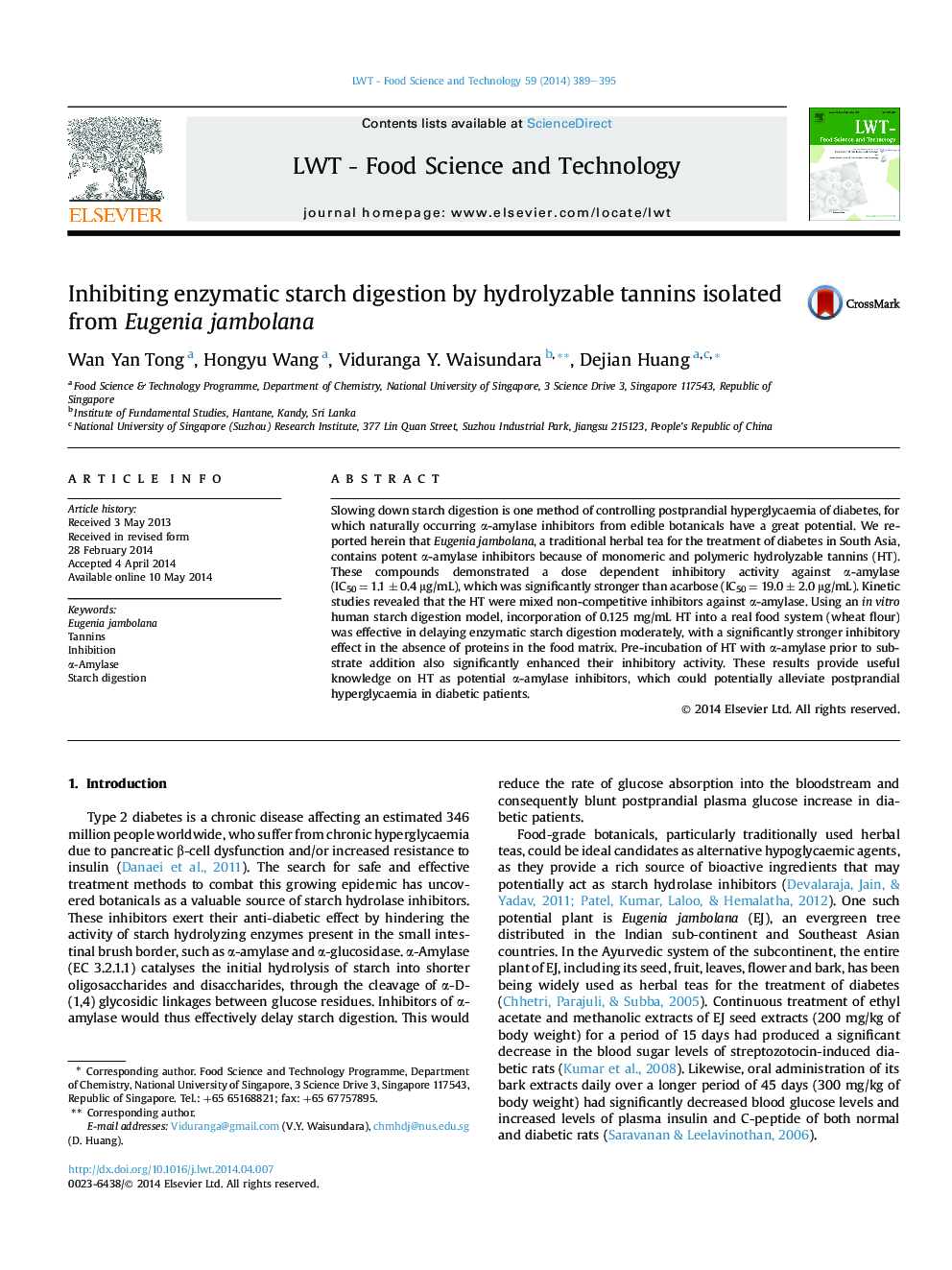| Article ID | Journal | Published Year | Pages | File Type |
|---|---|---|---|---|
| 6403631 | LWT - Food Science and Technology | 2014 | 7 Pages |
â¢Eugenia jambolana bark extract had potent α-amylase inhibitory activity.â¢The active component in E. jambolana is hydrolyzable tannins.â¢Hydrolyzable tannins act as mixed non-competitive inhibitors against α-amylase.â¢Comparing to acarbose hydrolyzable tannins are ten time more potent.
Slowing down starch digestion is one method of controlling postprandial hyperglycaemia of diabetes, for which naturally occurring α-amylase inhibitors from edible botanicals have a great potential. We reported herein that Eugenia jambolana, a traditional herbal tea for the treatment of diabetes in South Asia, contains potent α-amylase inhibitors because of monomeric and polymeric hydrolyzable tannins (HT). These compounds demonstrated a dose dependent inhibitory activity against α-amylase (IC50 = 1.1 ± 0.4 μg/mL), which was significantly stronger than acarbose (IC50 = 19.0 ± 2.0 μg/mL). Kinetic studies revealed that the HT were mixed non-competitive inhibitors against α-amylase. Using an in vitro human starch digestion model, incorporation of 0.125 mg/mL HT into a real food system (wheat flour) was effective in delaying enzymatic starch digestion moderately, with a significantly stronger inhibitory effect in the absence of proteins in the food matrix. Pre-incubation of HT with α-amylase prior to substrate addition also significantly enhanced their inhibitory activity. These results provide useful knowledge on HT as potential α-amylase inhibitors, which could potentially alleviate postprandial hyperglycaemia in diabetic patients.
